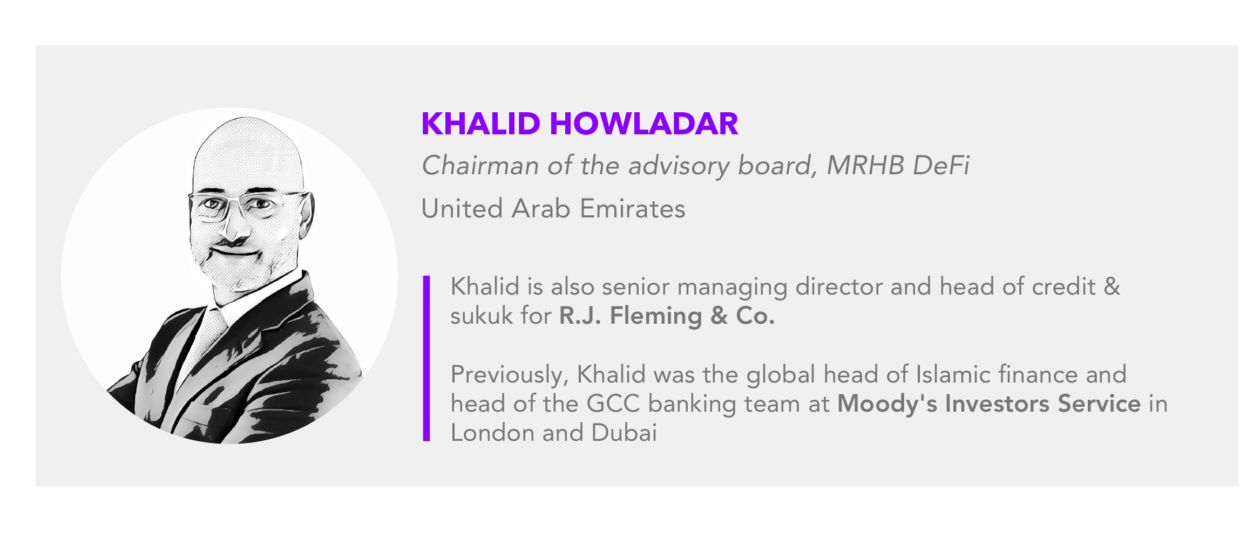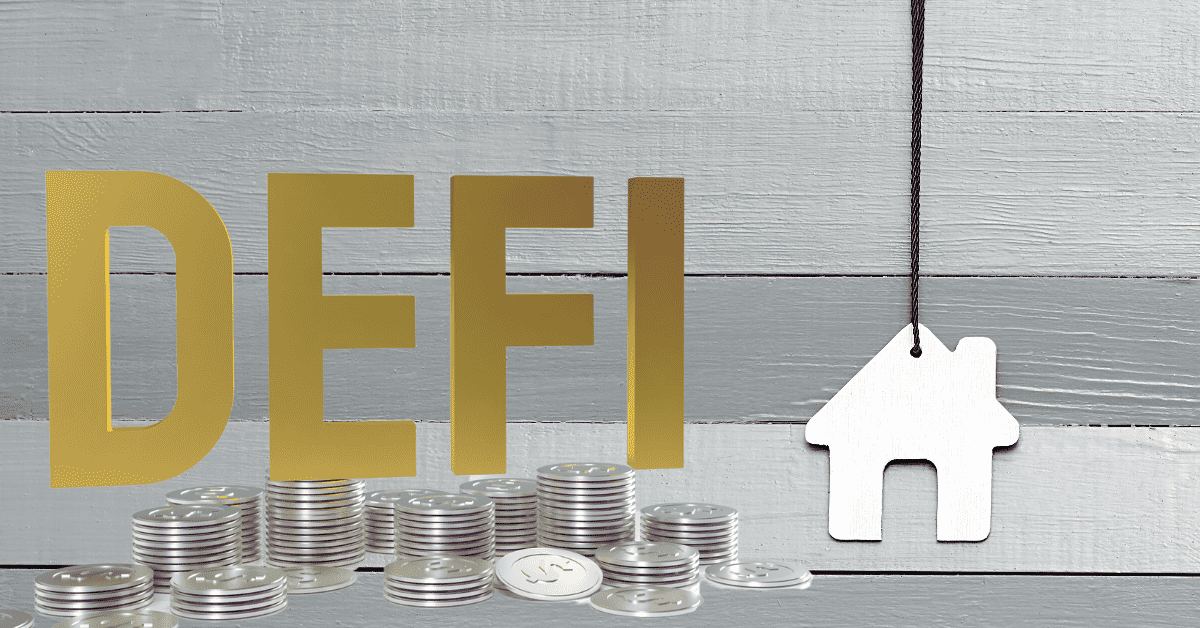As of 2020, nearly 2 billion people do not have access to basic financial services and remain “unbanked” — most are in high-growth emerging markets. The major cause of this phenomenon is the lack of banking infrastructure in these countries, often due to the challenges surrounding the profitability of such customers who typically have lower incomes. Decentralized finance (DeFi) has the potential to offer lower-cost services to these excluded communities and drive greater financial inclusion worldwide.
Economic prosperity and financial security are often linked to financial access. Thus, the unbanked can begin to transact through a constellation of decentralized platforms based on emerging blockchain technologies and hence participate more in the global and local wealth creation opportunities.

Where are the unbanked?
DeFi is undergoing extraordinary growth, and despite market volatility it is still growing at an incredible rate of over 1,100% in 2022 to surpass a total value locked of US$212 billion. While still relatively immaterial compared with the existing financial system, this high growth highlights the immense potential of DeFi to drive financial innovation and the possibility to change the way people — especially those in emerging economies — manage their finances.
For many, DeFi represents the first glimpse of a future beyond the traditional centralized financial intermediaries that have failed them thus far, but for others, it represents a more dangerous trend away from regulated financial products and services, which means less consumer protection and greater scope for money laundering. However, for both groups, DeFi has transformative power for communities in developing nations.
Nearly half of all unbanked adults live in just seven countries.
DeFi features and benefits
With DeFi, users can now earn, save, send and trade blockchain-based digital assets (or tokens) and non-fungible tokens (NFTs) assets through digital wallets and decentralized exchanges (DEX) without expensive brokers or banks. They can even use more advanced features if they wish, such as borrowing or lending (typically collateral-based) and insurance, while having complete control over their assets. It is worth highlighting that the wide prevalence of interest-based income or products means that such tokens are deemed prohibited by those communities (typically orthodox Muslim, Christian and Jewish faiths) that view interest-based debt financial practices as unethical and exploitative.
Transparency is a key aspect of most DeFi platforms since the software and protocols are often open-source with the underlying code readily available for review and open for auditing. All transactions are of course recorded on the blockchain, thus facilitating independent audits, security reviews and transaction verification. However, it should be highlighted that the immature nature of the sector and the volume of new projects still mean that frauds, scams and exploitation remain a risk.
DeFi vs. traditional finance
Although a dominant force in the DeFi ecosystem, the market share of smart-contract pioneer Ethereum as measured by total value locked (a key DeFi usage metric) fell to about 70% in December 2021 as more competitors entered the DeFi space such as Terra, Binance Smart Chain, Avalanche and Solana, to name a few. Indeed, there are many new blockchain-based ecosystems emerging, including Ethereum 2.0, and it is unlikely that any chain will become dominant in the near term.
This healthy competition reduces entry barriers and eliminates switching costs. For instance, Ethereum-based applications are permissionless, and they have the ability to seamlessly copy and adapt (fork) codebases. This lowers barriers to entry for everyday users and positions them as the direct beneficiaries of this innovation — although the “gas” fees on Ethereum are making it less attractive for smaller transactions.
The ability to easily move financial assets between different platforms forces DeFi platforms to compete on user experience, utility and transaction costs. The emergence of exchange aggregators facilitates consolidation across different applications. These aggregators, using public APIs, split orders between platforms by tapping into different liquidity options to offer end users the best exchange rate and asset prices, improving efficiency.
This is in sharp contrast to the existing centralized finance (CeFi) consumer banking system, where an account opening and associated facilities can take days or even weeks to execute in some jurisdictions. When coupled with other factors, such as minimum balance requirements, high transaction costs and sub-standard services, all these barriers discourage consumers from accessing finance, constraining wealth and growth for SMEs and entrepreneurs, although fully digital “neobanks” are also usurping the incumbents. In addition, DeFi removes the frictions of asset brokerage, especially regarding token transactions across platforms.
Stablecoins: a key role in DeFi
Because of its volatility, transitioning into cryptocurrency can be a daunting task. It’s difficult to exit the market or take a risk-off position without converting funds into fiat currencies at high expense and friction. Stablecoins address this issue. Each cryptocurrency is characterized by wild price fluctuations, but stablecoins peg their values to stable financial assets like the U.S. dollar and gold that ensures greater price stability and an ability to hold these “stable” reserves or savings in the cryptoverse. Stablecoins like USDC and USDT are tokens pegged to a reference asset like the U.S. dollar as they maintain the same value as the currency of the United States. There are now about 81 billion USDT and 53 billion USDC in circulation, with both coins representing centralized, fully-regulated stablecoins.
Some other advantages of stablecoins include introducing more competitive payment methods to the economy, real-time, safe and lower-cost. This makes it more secure and reliable for governments to initiate conditional cash transfer initiatives and stimulus money (such as the one by the Nigerian government during Covid-19). It also makes it possible for business owners to accept payments in a stable crypto asset and hence connecting the unbanked segment of the population into a more robust and scalable financial system without the associated volatility and risk.
It is important to emphasize that DeFi-backed stablecoins are an important building block in the entire decentralized finance system in that it underpins the stability of the ecosystem. However, it remains to be seen if such coins are negatively impacted by regulation or even made redundant by the introduction of central bank digital currencies (CBDCs).
How DeFi increases financial inclusion
DeFi now provides borderless crypto asset markets for access to larger liquidity pools, significantly lowering the cost of transactions for market participants. Today, several decentralized exchanges provide better and trader-friendly exchange rates for financial assets than siloed service providers and centralized exchanges.
If done in a way that ensures sufficient retail protection, expanding access to crypto asset markets will lead to more financial inclusion in developing countries. Providing access to digital financial services is one of the United Nations Sustainable Development Goals, and DeFi is at the forefront of this frontier. The U.N. notes that inclusion is a key enabler in actualizing other sustainable development goals, including lowering inequality, eradicating poverty, ending hunger, and economically empowering women. Thus DeFi, with its zero-marginal costs and internet-native services, can serve the marginalized population and enabling access to financial services can support the SDG goals if applied correctly.
Case studies: Zimbabwe and Venezuela
Within emerging markets in the global south, it is often argued that DeFi has the potential of transforming developing economies beset by inflation and unstable national currencies. Citizens of these countries, for example in Zimbabwe and Venezuela, suffer from a high degree of monetary mismanagement. Zimbabwe’s inflation has continued to increase since 2017 and hit 557% in 2020. The politically volatile country of Venezuela recorded about 65,000% inflation in 2018, resulting in the government restricting the lower and credit spending limits in bolivars to maintain the stability of the currency.
For these countries and others in the same category, DeFi provides a secure and rewarding way to bypass unstable national currencies to enjoy financial services that are otherwise inaccessible. While we may center our discussion on paying for goods and services, helping those affected by rapidly depreciating national currencies and inaccessible essential banking needs to save, trade, and invest for their future, is DeFi’s pitch. It does however threaten the incumbent banks and systems that seek to retain power despite failing their citizens in the most spectacular way.
The future of decentralized finance
The exponential growth of DeFi in recent years is largely driven by technological, social and macro trends. As more people embrace DeFi and more investment is directed towards the development of more DeFi protocols and dApps, volumes will grow and it will become easier to use and more efficient for the mainstream to participate.
The future will also likely see the “gamification” of services where customers will be rewarded with tokens as they use their accounts, support the environment, social causes or other community activities.
DeFi ultimately has the aspiration to offer communities a seamless and comprehensive financial experience from anywhere in the world. A decentralized ecosystem removes location, status, and wealth barriers, as it can provide the unbanked individuals with access to new entrepreneurship and wealth creation opportunities, lending and borrowing facilities, remittances, digital payments, and other financial services. In the process, DeFi can help moderate the problems of global poverty and make global payments accessible and affordable. Indeed, blockchain is projected to slash the average global remittance fees from 5% to less than 1%, according to PwC.
Like any new technology, it is vital to be wary of the challenges associated with its mass adoption. For now, DeFi is still in its infancy and prone to issues related to anti-money laundering, user interface and hacking risks. While it is difficult to predict DeFi’s future accurately, smart-contract-based automated banking and financial activities will usher in operations run by algorithms and code without costly human intervention. Like self-driving cars, we may see self-operating banks in the not-too-distant future.




